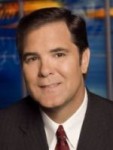 Greg Hunter – Futurist and economic researcher Chris Martenson says we are not at the end of a business cycle but “. . . at the end of a credit cycle.” Martenson warns, “Here’s why people need to be concerned.
Greg Hunter – Futurist and economic researcher Chris Martenson says we are not at the end of a business cycle but “. . . at the end of a credit cycle.” Martenson warns, “Here’s why people need to be concerned.
Credit cycles, when they blow up, are really, really destructive. 2008 to 2009 was very destructive. Instead of realizing the error of their ways, they went for a third. This is the most comprehensive credit cycle that we have seen.
Remember, bubbles have two things that they need. Number one, a good story that people can believe in and, of course, it’s a false story. Number two, ample credit. That’s what the Fed and central banks of Japan and Europe have done. They just flooded the world with credit. Now, we have bubbles everywhere. When these burst, it will be the worst bursting in anybody’s lifetime because we have never seen anything like this.”
https://youtu.be/M4gAAUBPRlE
